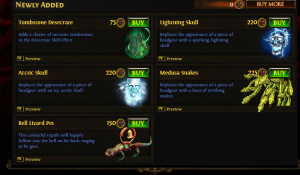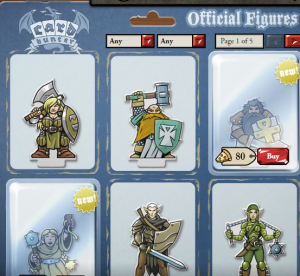Microtransactions have become a major strategy for developers looking for additional profit with their games and the two most popular platforms are arguably the mobile and PC markets. However while their purpose is the same, microtransactions have a different impact and use on the two and it’s important to understand them, especially for games looking to make the jump between the two.
Dollars and Cents:
Let’s begin with the mobile market. First off, for this post we’re going to ignore dedicated handheld video game platforms (3DS and Vita), because the psychology of using one is different compared to that of a Smartphone or tablet.
The majority of consumers who use a Smartphone or tablet for games didn’t buy the device specifically for them. Instead, games are a secondary function and designers know that and take that into account when designing and pricing mobile games.
When most people play a mobile game, it’s supposed to be a quick experience, something to past the time when waiting on something or if you have a few minutes to kill. While you could play a mobile game for hours on end, the actual design is usually meant for quick bursts and not extremely engaging gameplay.
Because of that, it’s very easy for someone to get burnt out when playing a mobile game for a long duration, but there’s the paradox: To maximize profits, a designer wants someone to play a game for a long time but not for extended periods.
And this is where the monetization model of time savers, pay or wait, shortcuts, etc comes from. By using systems like pay or wait, the designer can limit how often someone can play a game without spending money. And they can make the cost small enough that for someone on the go, spending a dollar or so for a few minutes of enjoyment doesn’t sound like such a bad deal.
Most games built around monetization for both mobile and social markets are designed with simple mechanics that can be extended very easily through variable adjusting. Allowing a designer to keep adding challenges or new content by simply tweaking the values to go up and up as the player progresses.

F2P games aimed at the mobile or casual markets, based their monetization on premium currency or items with a limited duration.
So at the start of playing, the player may have to wait around 10 seconds between rounds or actions, this will eventually increase to waiting minutes, into hours or even more between actions.
And by that point, the person should be hooked enough that spending a dollar to keep playing would seem like a no-brainer.
On the flip side, designers have to know how far to stretch the cost of playing and while that $100 option for premium currency sounds like a sure investment, they need to be careful about how high they are actually pricing the game. Saying your app is free to play and then requiring a $20 purchase to unlock all the levels doesn’t sit well with people, especially when there are dozens if not hundreds of games for 99 cents waiting to take your customer away.
The problem with customer retention is one of the big issues with mobile development and why we’re not seeing the same level of scope with Indie and handheld games on other platforms. Building an 80 hour RPG for the Smartphone and charging $20 is just not going to work for the general consumer.
First, they’re going to be turned off by the initial investment and to spend all that time on one game where there are others for quick enjoyment sounds like a better deal. This is actually a similar situation we’re seeing on the PC thanks to game sales, as why should someone spend $60 on a retail game when they can get as much enjoyment or more out of a $20 or less indie title?
While advertising saving time and quick purchases works for the mobile market, among hardcore gamers, we have a different option on the matter.
The Long Haul:
While someone who plays mobile games generally play them when they have time to kill, a PC gamer is a bit different. Most PC gamers budget their time to play games in chunks of time; all the more so when you’re older and you may only have an hour here and there thanks to work and family.
For me, I budget my time to play a game for like an hour or two a day and then that’s it for the rest of the day or even couple of days. Regardless, when someone sits down to play a game on the computer, they don’t want to be told that they can’t play now and come back when your energy is restored.
Try to imagine the backlash if Blizzard ever put a pay or wait mechanic in WOW or Diablo 3. For a PC gamer, everything is an investment and the audience is savvy enough to understand everything about your microtransactions.
Try to trick or force someone into spending money either through design or confusing wording and they will leave in droves. When someone spends money on a PC game, F2p or regardless, they need to know that their money is going towards something worthwhile.
While a mobile gamer may be find throwing a dollar or two to speed things up or for a short term boost, educated gamers aren’t going to be so giving. They need to see something worth spending money on and not just spending money on currency for currency sake.

Creating items that have a permanent effect or personalization is a great way of adding value to microtransaction purchases.
Again, you’re not just competing with other F2P games but every game that is available and there are a lot to choose from.
On the plus side, it means that you can afford to develop content that can be priced higher as if the value is there, then someone will purchase it.
Case in point are the premium skins for League of Legends which can go for $20 a pop. Having a purchase like that on a mobile device would be crazy as you lose the impulse buy associated with the platform. But for a PC gamer invested and wanting to show their support, they will pony up for it.
To put it another way, it’s better to have quality microtransactions as opposed to quantity with small and frequent ones. One thing that is sure to drive PC gamers away is saying that in order to play they need to keep spending money in between matches or play.
Or worse, saying that spending money only gives the player a chance at getting something they want. As we’ve talked about in earlier posts, you need to be as explicit as possible with PC gamers. They need to know that if they spend X then they are going to get Y, not a chance to get Y.
It’s all about the dollars and cents and what they will get someone. If someone spends money on premium currency in League of Legends, they know exactly what it can be used for: New champions, skins, boosts and rune pages. There’s no guesswork involved, it’s akin to going the store and buying a product.
Now I know that with both platforms there are the whales: The small percentage of people who become completely hooked and will buy almost everything.
And while they are great for profit, they are the minority and not the same as the general consumer of your game. Building a game to explicitly target whales with microtransactions is sure to drive more people away then pull them in.
Trying to move a F2P or monetized game from one platform to the other requires a careful eye to how the design of the game and microtransactions intersect. A lesson that EA is apparently following, as reports are saying that Plants vs. Zombies 2, the heavily microtransaction sequel to the PC game has been updated with a change to its model.
The game has less microtransactions than before with a higher difficulty to compensate. Some people are speculating that this is to make the game more appealing to the PC market when the game is hopefully released there soon.
When moving a mobile game to the PC market, ultimately there is one question that needs to be answered to determine its viability: If all the monetized elements were stripped out, would the game still be worth playing?
For many mobile games, their limited game designs and systems mean that there just isn’t a lot there and this is why the microtransactions gate the content. And as we’ve talked about, playing a mobile designed game for long periods of time is a surefire way to get burnt out on it.
This is the reason why games like League of Legends, Card Hunter, Path of Exile etc work, because at the end of the day they are still engaging titles with or without their microtransactions. And none of them would break down if the game all of a sudden became completely free.
Quality over Consumerism:

Remember, you don’t need to create game breaking purchases to attract people, as long as they’re getting something of value for their money spent is fine.
In the end, designing a quality game first is the big factor and what separates games that are out to make a quick buck vs. those that are being developed for a quality experience.
While earning money for your game is an important goal, the real measure of the quality of your f2p game is if you can convince people to spend money for simply supporting your game.
It’s not easy to do and there are only a few F2P games that have achieved that, but for the designers chasing the profits of League of Legends, it is part of what has made Riot Games a success and an important consideration for anyone attempting to make a successful F2P game.


